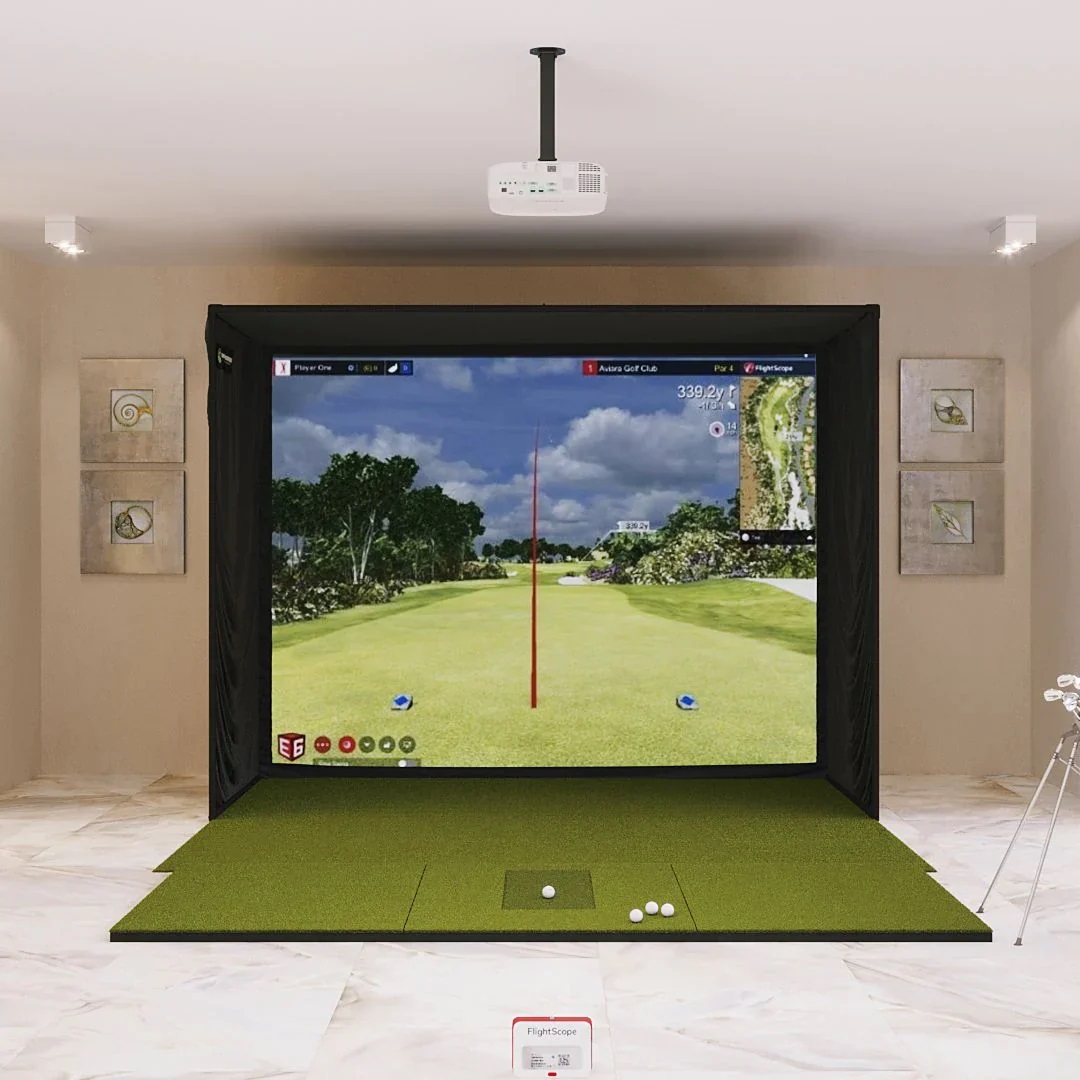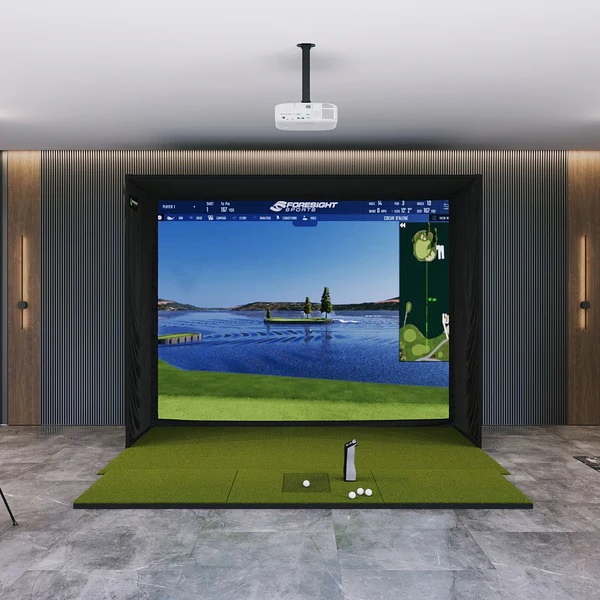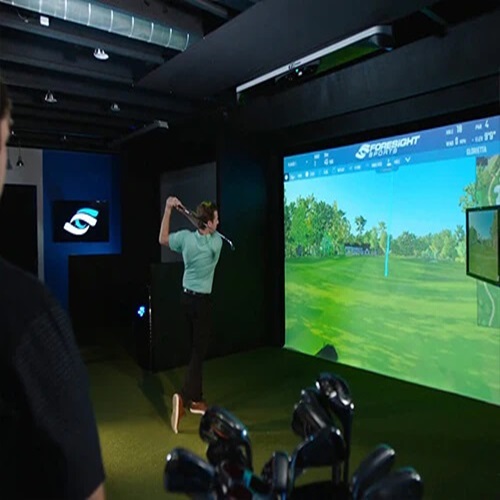Play Year-Round Golf -Top Golf Simulators 🏌️
Enclosure- 3 Sizes To Choose From
FlightScope Mevo+ Launch Monitor
Face Impact Location for Mevo+
Mevo+ Pro Package
BenQ AH700ST Golf Simulator Projector
4x9 HotShot™ Hitting Mat
Current Price: $8,271.40- Regular Price $9,351.75
*Payment Option Available
Enclosure- 10x15.5x5
Foresight GCQuad Launch Monitor
LG ProBeam BU53RG Projector
Projector Mount
TrueStrike Academy Golf Mat
4x9 HotShot™ Hitting Mat
Current Price: $24,869.65- Regular Price $26,678.90
*Payment Option Available
Enclosure- 3 Options Available
Trackman IO Launch Monitor
BenQ LK936ST 4K UHD Golf Simulator Projector
Projector Mount
TrueStrike Academy Golf Mat
6x9 Studio Mat, Center Hitting - Fiberbuilt Grass Series
Current Price: $24,446.30- Regular Price $27,732.95
*Payment Option Available _
Enclosure- 10x15.5x8 (C-Series) with Impact Screen
Foresight GCHawk Launch Monitor
BenQ LK936ST 4K UHD Golf Simulator Projector
Projector Mount
TrueStrike Academy Golf Mat
6x9 Studio Mat, Center Hitting - Fiberbuilt Grass Series
Current Price: $34,679.6- Regular Price $36,504.85
*Payment Option Available
Key Factors to Consider When Choosing a Home Golf Simulator:
1. Accuracy and Realism
- Swing and Ball Tracking: Look for a simulator that uses advanced tracking technologies (such as radar, infrared, or cameras) to accurately measure swing speed, ball flight, spin rate, and trajectory.
- Course Realism: The quality of the graphics and the number of available courses can enhance the realism of the experience. Higher-end simulators provide 3D-rendered golf courses that are very lifelike.
2. Space Requirements
- Room Size: Make sure the area where you'll set up the simulator has enough space for full swings. Check the minimum height, width, and depth requirements. Many simulators require at least 10 feet of ceiling height.
- Indoor vs. Outdoor: Determine whether the setup will be permanent indoors or used in a garage or outdoor space where weather may affect your decision.
3. Budget
- Simulator Costs: Simulators range in price from a few hundred to tens of thousands of dollars. Set a budget for the simulator itself, as well as any additional equipment (like nets, screens, and projectors).
- Subscription Fees: Some simulators require ongoing subscription fees for software or course updates. Consider this for your long-term budget.
4. Software Options
- Golf Courses: Some simulators come with a library of courses, while others require you to purchase additional course packages.
- Multiplayer and Practice Modes: Check if the software includes multiplayer options, driving range features, or specific practice drills to enhance your skill-building.
5. Setup and Ease of Use
- Installation: Some simulators are plug-and-play, while others require more complex installation. If you're not tech-savvy, you may want a model that's easy to set up or consider hiring a professional.
- Portability: If you need to move the simulator around, consider models that are lightweight and portable.
6. Screen and Projector Quality
- Screen Size and Quality: A high-quality impact screen and projector can make a big difference in the immersion. Some simulators can be used with a TV, while others use dedicated projector screens.
- Resolution: If using a projector, consider the resolution to ensure the visuals are crisp and detailed.
7. Compatibility with Other Devices
- Integration with Golf Analyzers: Some simulators can sync with golf swing analyzers and fitness trackers for deeper analysis of your game.
- VR and 3D: Higher-end simulators sometimes offer virtual reality or 3D options for an even more immersive experience.
8. Durability
- Build Quality: Ensure that the net, mat, and any other accessories are made of durable materials to withstand regular use, especially if the simulator is shared with other family members or friends.
9. Support and Warranty
- Customer Support: Good technical support can make a difference if you run into issues.
- Warranty: Look for a product that comes with a decent warranty for both hardware and software components.




